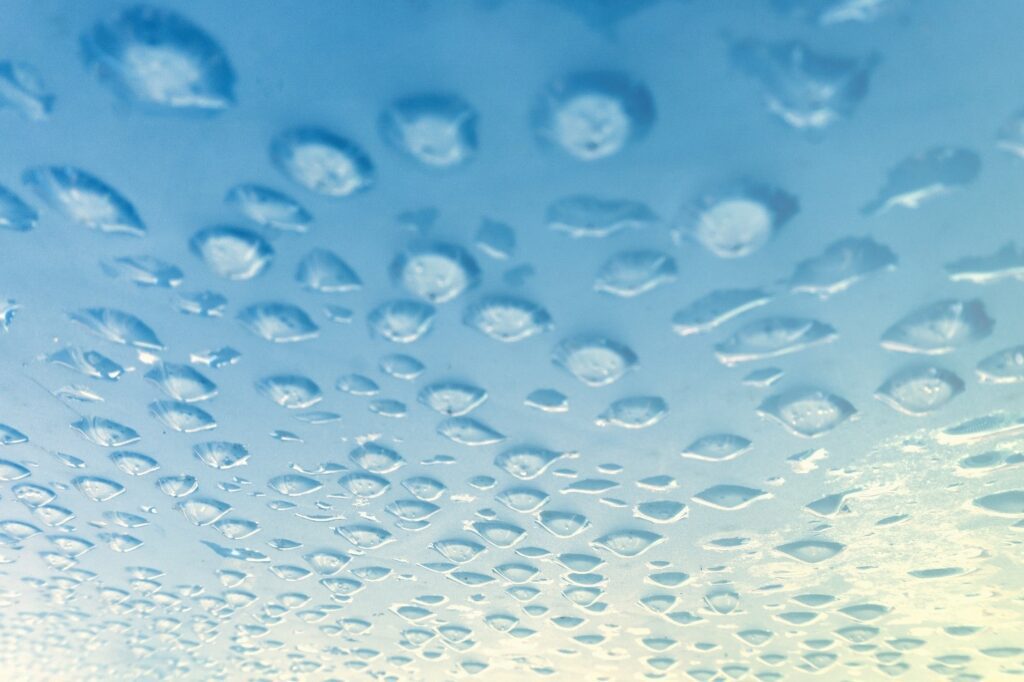Metal buildings are well known for their durability, strength, and weather-resistance, making them a superior choice over many traditionally-constructed buildings. In fact, metal buildings can even save you money on insurance. However, metal buildings are also prone to issues with condensation not typically seen in conventional buildings.
While condensation can damage metal buildings over time, preventing condensation and the water damage that results isn’t difficult. Whether you’re considering the purchase of a new metal building or already own one, here’s what you need to know to protect your building.
How does condensation occur in a metal building?
Condensation occurs when water vapor in the air rapidly cools, changing it to liquid water. We see this phenomenon when a drinking glass “sweats” on a hot summer day or when eyeglasses fog up when we enter a warm room after being outside in the bitter cold.
Condensation occurs in metal buildings in much the same way. As humid air comes in contact with the cool metal of the building, water droplets form, which can lead to dripping or sweating.
Condensation or sweating most often occurs when indoor humidity levels are high. Humidity levels can be influenced by several factors, including the airflow of your building, outside weather conditions, your heating and cooling system, or the activities you perform within the building.
Why worry about condensation?
Preventing condensation is crucial since it can result in long-term damage to your metal building, including metal roofing. There are two kinds of condensation in typical metal buildings—visible and concealed.
Visible condensation, as its name suggests, is easy to spot and commonly forms on surfaces including cooling ducts, water pipes, skylights, or insulation retarders.
Concealed condensation occurs in areas where humidity enters the building and settles into cooler areas that aren’t visible, such as inside walls or above finished ceilings. Evidence of concealed condensation is typically identified only after damage has occurred, through the formation of stains, mildew, mold, or damp spots. Bubbles, blisters, or other issues on surfaces throughout your metal building could also indicate a condensation issue.
Both visible and concealed condensation can lead to damage over time, including:
Corrosion
The most damaging effect of condensation in metal buildings is corrosion. Regular exposure to condensation causes the metal material to weaken and oxidize, resulting in rust.
Insulation Damage
Condensation adds moisture to insulation material, which provides an ideal environment for mold and mildew growth. Moist conditions also encourage insect infestation. Metal panels that are exposed to damp or wet insulation can also corrode or rust.
How to Keep Your Metal Building Dry
Controlling the humidity level inside your metal building is the best way to prevent condensation. For best results, metal buildings should be kept at a relative humidity of 30% to 50%. Here are some tips for managing humidity levels and preventing condensation from forming.
Invest in DripStop Panels
Some metal building manufacturers, like Newmart Builders, Inc., use DripStop panels, which provide superior protection against condensation in metal buildings. DripStop panels come pre-installed with a self-adhesive felt membrane, designed to trap moisture until it naturally evaporates. DripStop eliminates condensation issues and provides an extra layer of protection for your metal building.
DripStop’s felt membrane works by trapping water in special pockets, holding up to 10 times its weight in water (more than 1qt. per 10 square ft.).
DripStop is anti-microbial and resists mold and mildew, providing excellent condensation protection for agricultural buildings, workshops, barns, carports, and RV storage.
If you’re looking into a new metal building, be sure to ask about adding DripStop technology!
Provide Adequate Air Circulation & Ventilation
Metal buildings need adequate ventilation and air circulation to prevent high levels of heat and humidity, which can lead to stagnant air. Stagnant indoor air offers the perfect environment for condensation.
Installing roof ridges and eave vents can enable natural air circulation throughout the building. Ceiling and floor fans can also help to move air throughout the building to encourage evaporation.
Use a Dehumidifier
Dehumidifiers can help balance humidity levels throughout your metal building. Depending on the size of your building and the weather conditions, you may need to use multiple units to maximize your results. Air conditioning systems are also very effective at reducing humidity levels.
While metal buildings have a reputation for condensation issues, there are multiple ways to combat the problem. Investing in DripStop panels, providing proper ventilation, or using a dehumidifier can go a long way towards preventing condensation and extending the life of your metal building.
Invest in a Metal Building Built to Prevent Condensation
Whether you want to build a garage, add a carport, or provide storage for RVs, farm equipment, or livestock, Newmart Builders specializes in durable steel buildings to fit every need.
Contact us about adding our optional DripStop panels designed to eliminate troublesome condensation and prevent water damage to your roof and building.


